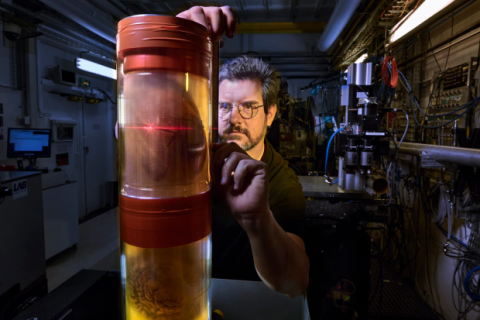World's brightest x-rays reveal COVID-19's damage to the body

arclein
This is the greatest imaging revolution yet. We can finally get down to scale for micro capillaries. We have now discovered that COV19 is a vascular disease. and hugely awful. At best it will cause deep scarring and if you survive, the body will need to rebuild the vascular system itself and this obviously takes a lot of time.
I am completely convinced that my vitimin C saturation strategy has held this monster at bay. I also do not think i was so lucky as to avoid contact. the nasty may well have been lodged in my sinus for around four months until it disapated. Anything that got away was stopped by the vitimin C which is every cells first line of defense.
as we all get older, we suffer from low level scurvy which we do not even notice, but is the prime cause of circulatory disease. Now tell me I am wrong. doctors heading for Wuhan all packed plenty of vitimin C, but likely not enough. Since i want saturation i consume six or more grams every day with no side effects.
This also explains the early onset of skin wrinkling.
World’s brightest x-rays reveal COVID-19’s damage to the body
A new scanning technique delivers exquisitely detailed images—and could revolutionize the study of human anatomy.
BYMICHAEL GRESHKO
PHOTOGRAPHS BYLUCA LOCATELLI ANDESRF, HUMAN ORGAN ATLAS
PUBLISHED JANUARY 26, 2022
• 20 MIN READ
https://www.nationalgeographic.com/science/article/worlds-brightest-x-r…
When Paul Tafforeau saw his first experimental scans of a COVID-19 victim’s lung, he thought he had failed. A paleontologist by training, Tafforeau had been laboring with a team strewn across Europe for months to turn a particle accelerator in the French Alps into a revolutionary medical scanning tool.
It was the end of May 2020, and scientists were anxious for a better view of the ways human organs were being ravaged by COVID-19. Tafforeau had been tasked with developing a technique that could make use of the powerful x-rays generated at the European Synchrotron Radiation Facility (ESRF) in Grenoble, France. He’d pushed boundaries on high-resolution x-rays of rock-hard fossils and desiccated mummies as an ESRF staff scientist. Now, he was dismayed by a lump of soft, squishy tissue.
But when his colleagues caught their first glimpse of the lung scans, they felt something else: awe.




























Comments
World's brightest x-rays
Comment